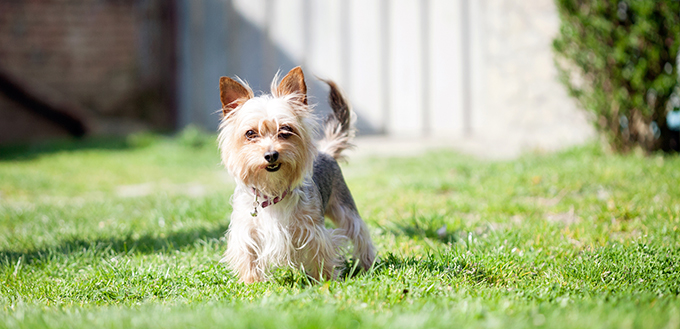We all want to give our pets as much freedom as possible, while at the same time keeping them safe from potential dangers and not infringing on the freedoms or privacy of others. It can be a tricky balancing act that is often solved by resulting to either not allowing your dog in the yard unattended, or by erecting fences along your property boundary. Both are restrictive for the animal, and neither are always practical solutions for busy owners.
Luckily there is another solution. In just 7 steps you can teach your dog to stay within the permitted area of your yard and never worry about them wondering off again.

Understanding the Electric Dog Fence
The best thing about these 7 steps is that they can be undertaken by anyone, and with a dog of any age. Training may be easier with a younger dog, although with very young puppies, it may take a little longer. The other great thing about the 7 steps, is that they can be easily incorporated into the use of an electric dog fence – giving you that little extra piece of mind.
An electric dog fence is usually a hidden wire, connected to a control box. The wire goes around the area of your yard within which, you want to contain your dog. The dog wears a shock collar containing an FM receiver, and if they get too close to the wire it sends a signal to the collar, first, the dog is alerted by a noise and if ignored this is followed by a small shock. The dog is alerted that they have gone too far from their set area and returns to the permitted area of the yard.
It is important to note that the shock is small and not dangerous to the dog in any way. When setting up the electric dog fence, the shock level is tailored to the specific dog, always starting on the lowest possible setting. When combined with the 7 steps, the chances of your dog getting that close to the wire that they receive any shock at all, are greatly reduced.
You may wish to check out our review of the best electric dog fence for a guide into the best products on the market at the moment.
Check out our guide on the Best Shock Collar for Dogs.
The 7 Steps
Keys to success of the 7 steps are continuity, commitment and perseverance. While the steps are simple, they do take time and the more time and commitment owners put in, the more successful the 7 steps are.
- Step 1
The first step is to mark out the boundary of the area that you want your dog to have access to. Mark the area with flags and where possible include natural markers such as trees, hedges or existing fences. If you are using an electric dog fence, then this should be step up at this point and your dog should be introduced to the collar so that it is comfortable before training begins.
- Step 2
With your dog on a leash walk the boundary line that you have created, keeping your dog on the permitted side of the boundary. It is important that during this process they do not cross the boundary. Tighten or readjust the leash to ensure they stay on the permitted side. If using the electric fence, then the sound/shock alerts you and your pet pooch if they have got too close to the boundary line. This process needs to be repeated several times over 2 to 3 days. The exact number of days, and times, depends on your dog and how well they react to the boundary line training.
- Step 3
Once your dog can recognize the boundary line, it is time to move onto the next step. Now you need to train your dog to stay on the right side of the boundary line, even when you are not next to them. You need to use simple commands to achieve this, even if using the electric dog fence. Stop and Stay are the most obvious voice commands to use, but again every dog is different and if you have a set of commands that you already use in other situations, then go for it.
This step requires you to get your dog to stop on the right side of the boundary line, while you cross the line. They should stop and stay while you cross, voice commands should be used to reiterate the need to stay. If you are using the electric dog fence, try to time the voice commands before the shock, then they associate the audible alarm with the command. You can provide small rewards for your dog each time they successfully complete this step.
Note: Another solution to consider is dog tie-outs and trolleys, enabling your dog to have some outdoor freedom while keeping them safe and secure.

- Step 4
The Stop and Stay step can take several days to master, and step 4 involves repeating step 3, for at least 15 minutes a day over a period of at least 3 days. As with previous steps, some dogs get the hang of this before others, so work with their specific needs.
- Step 5
Now it is time to start testing your dog’s newly learned behaviors. Place a toy or food on the wrong side of the boundary; encourage your dog to stay on the right side using the Stop and Stay commands. For some dogs you might find it useful to introduce the command ‘Leave’. Again, voice commands should still be used even if you are using the electric dog fence. If your dog manages this step, ensure you reward them. If they do not, then return to step 3 before persevering.
- Step 6
Now it is time to introduce bigger challenges. It is important that you tailor these to your dog, not only to really test what they have learnt, but also to ensure their safety and the safety of others. For example, if your dog really has problems ignoring other animals, then avoid using another animal as your first big test; a neighbor or a friend might be a better option. Repeat the process used in the previous step, remembering to reward your dog when they achieve their goal.
- Step 7
Do not try this step until you are sure that you have a good chance of success, especially if you are near a busy road, or likely to encounter animals they are unsure of, or people they may consider a threat.
The reason this is so important is because to achieve this stage your pet needs to be off the leash and you need to provide them with a reasonable amount of space between you and them. Let them wander around the allowed space, follow them and see if they respect the boundary line. Remind them with voice commands if needed, and if they are having difficulties, then revert to previous steps.
Once they have achieved step 7, your dog should be perfectly boundary trained and able to resist all temptations to cross the boundary line that you have imposed. Remember though that dogs are living creatures with their own minds, so, especially if you are not using an electric dog fence, repeating training at different intervals and never leaving them alone for too long is still vital.
Sources:
- How To Keep Your Dog From Escaping, The Humane Society of the United States







